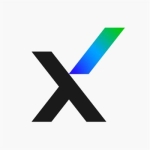What is our primary use case?
Our use cases for Trend Vision One are monitoring and alerts.
How has it helped my organization?
The biggest challenges we wanted to address with Trend Vision One were securing endpoints and enabling us to quickly respond to incidents or threats. This is the main goal for using this solution.
Trend Vision One has improved the way our organization functions by acting as both a monitoring tool and an antivirus, giving us insight on potential threats and enhancing our response time to security incidents. It is hard to measure the time savings but we save a significant amount of time in responding to potential threats. For example, we don't expect employees to respond to emails, chat, or calls outside of working hours. Trend Vision One has a feature where we can block all access to the laptop or endpoints. It allows us to take immediate action without waiting for the user to respond.
In terms of reducing noise from false positives, unfortunately, some behaviors can be mistaken for bad behaviors, but that isn't the fault of the software itself. It largely depends on how the developers of other applications implement their software and how it is run. We encountered an issue with another software called Rapid7, which periodically runs a command on MacBooks or Apple operating systems. This command, which is quite lengthy, searches for any unsecured credentials or API keys related to GitHub on the laptop. The way the application triggers is significant: it runs under root privileges, executing that command in the terminal for the user. Trend Vision One picks this up as a suspicious command, interpreting it as an attempt to find unsecured credentials. Despite having whitelisted the entire command in Rapid7, Trend Vision One still flagged it. We went back and forth on this issue, but ultimately we decided that it wasn't worth further troubleshooting to silence this alert due to the potential for actual malicious use of such commands. While we could whitelist it, we did not want to risk it being exploited maliciously. In the end, we chose to ignore the alert. They helped us reduce some other noise, but there was some noise that we weren't able to reduce.
Vision One AI has been very useful. All IT people stay up to date with security risks, exposures, alerts, or attacks. Vision One AI helps us explain or understand the alerts and what actions are recommended.
What is most valuable?
The workbench alerts are something we find very useful, as they help us stay informed about various activities. Not all alerts are positive, but they provide valuable insights into the detection methods and help us understand how certain issues arise. For example, if someone attempts to run a piece of software that encrypts a file, one of our tools, which is used for evidence gathering in surveillance systems, may encrypt the file too quickly. As a result, Trend Vision One may trigger an alert. Although this is a false positive, it still gives us insight into the behavior involved. This allows us to investigate the alert further and provide feedback to the user or development team, letting them know that similar triggers are likely to occur with other security systems or software.
Other useful features include intrusion and mailbox alerts, suspicious unauthorized access, tracing logs, website clicks, and email filtering for bad attachments.
What needs improvement?
The improvement I have been asking for is an easier way to create MDR requests. Not all alerts that come through Trend Vision One receive an investigation, and we would like the ability to easily request an investigation on lower-scored alerts without logging into the support portal to create a ticket.
I would like to see Trend Vision One and OfficeScan consolidated into one platform. Currently, it is the same space but two different layers. It would be nice to have both combined instead of having two clients.
There is room for improvement when it comes to support.
For how long have I used the solution?
I've been working with Trend Vision One for three years.
What do I think about the stability of the solution?
Trend Vision One is stable enough. We don't see many performance impacts on our endpoints, except for when our weekly scheduled scans happen. Our developers express that it limits how freely they can develop, but I personally appreciate the insight it gives us and the actions that allow us to take on our devices.
How are customer service and support?
I would rate their support a six out of ten. We encountered an issue with one of our tools—specifically, Visual Studio. One of our developers faced difficulties debugging code because Trend Vision One was blocking the debugging application or causing it to crash. This problem stemmed from a Windows update, and it took us a month and a half to identify the root cause. After we opened a ticket either at the end of March or early April, we waited several more weeks for a solution. Although the Windows update occurred back in February, we didn’t receive the fix until the end of May. The interaction between Windows and the application played a significant role in the issue, as the debugging application starts the code and injects itself into the running application, which Trend Micro flagged as problematic after the latest Windows update. Fortunately, this issue has now been resolved, but it was indeed a painful experience. Our developers were understandably frustrated that they couldn’t debug code for a month and a half, which impacted our project timelines.
How would you rate customer service and support?
Which solution did I use previously and why did I switch?
The company previously had SentinelOne before my time, and I can say that SentinelOne was not effective.
We currently use Rapid7 as our Managed Detection and Response (MDR) service. In my experience, both Rapid7 and Trend Vision One serve similar purposes, but they have distinct differences. There are times when Rapid7 provides us with more detailed information, while at other times, Trend Vision One offers greater insights. This is partly because Trend Vision One collects more data from the devices, allowing it to better identify the root causes of alerts compared to Rapid7.
Additionally, I find that the MDR team at Trend is generally more responsive than that of Rapid7. However, there are some disadvantages as well. For instance, we haven't yet set up cloud monitoring capabilities with Trend Vision One. Rapid7 currently handles our cloud infrastructure monitoring and manages services like Office and Okta. While Rapid7 is equipped to monitor these services, Trend Vision One is not yet at that level. We are exploring ways to enhance its capabilities, and if it can provide the same level of service as Rapid7, we might consider discontinuing our use of Rapid7 altogether.
How was the initial setup?
We use the SaaS solution. I was not involved in the initial setup and deployment process, which occurred prior to my time here, but I have readjusted some policies.
Previously, it was difficult to understand some alerts. However, as time goes by, we differentiate better between them, and the AI feature is an extremely good tool that explains things that are gibberish to the regular user. The learning curve is quite steep.
What was our ROI?
It has helped us understand some of the alerts that we did not comprehend.
What other advice do I have?
It is an all-around solution that includes various modules for comprehensive security monitoring and alerting. This solution is particularly effective when integrated with other hardware or on-premises solutions, such as Deep Discovery Inspector, which monitors your network.
The interface is adequate, but it is constantly changing. New features are being added, and items are being rearranged almost daily. We might have missed some announcements regarding these frequent updates. As it is an evolving solution, such changes are to be expected. However, there are still features that are buried within menus, which previously required extensive searching to locate. For instance, until last year, isolating endpoints was only possible through the search function. Now, they have added a feature within the endpoint inventory that allows you to select devices and isolate them immediately, rather than having to jump through multiple hoops to access that option.
The application has also become slightly more responsive. Regarding its functionality, the insights it provides are quite useful. The application displays various actions, and you can drill down into alerts to view the execution path associated with them. For example, if an application triggers an alert, you can right-click on that alert and select "Check Execution Profile." This feature shows you where the process started, what actions it took, and where it ended. This improvement is beneficial for understanding how tasks are executed.
I would rate Trend Vision One an eight out of ten.
Disclosure: PeerSpot contacted the reviewer to collect the review and to validate authenticity. The reviewer was referred by the vendor, but the review is not subject to editing or approval by the vendor.



















